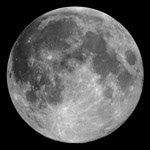Okay, so the blogging idea kinda fell away somewhat. I did have a little bit of an excuse because, out of nowhere, an idea came to me to write a Haynes Manual about the Apollo Lunar Rover. Thanks to linking up with Christopher Riley (@alifeofriley) and Phil Dolling, the book has been published. But a desire on the part of Haynes to have it available for Christmas meant that the second anniversary of the solar panels coincided with an intense period of writing and editing activity. Now that our book is out there and living a life of its own, I've got a chance to catch up with the progress of the panels and their generation.
Year 2 had a good start with a few sunny days, but within a week, it had fallen behind year 1. This was about the time we had an unseasonable storm blow through and it did so with the trees in full leaf. As a result, Scotland's summer of 2011 looked rather autumnal with the windward sides of many trees covered in brown leaves. It was also a notoriously bad summer. Nevertheless, by the end of July 2011, year 2 had nearly caught up on year 1. Autumn 2011 was a really poor one with a second storm blowing through and by December 2011, year 2 was 200 units behind the first year.
By the second anniversary, year 2 had generated 2,406 units which is a little down on the 2,480 suggested by the installation company and 207 below last year's total. Here's a diagram that compares each year by graphing the cumulative generation. It includes the first half of year 3.
Mid way through year 2, the difference in generation between the two years did make me stop and wonder whether the reduction was due to some sort of drop in efficiency. However, I don't think this is the problem. Notice how, having achieved a 200-unit separation, the two graphs more or less keep that separation. Also, year 3 is managing to keep up with year 2 and because of recent good weather, has surpassed it.
In truth, solar panel generation in Scotland is extremely sensitive to the vagaries of our weather. A hot spell like we used to get in times past could transform a year's generation figures. And it is true that both of the last two summers have been rather poor. Here's the overall graph of daily generation since the panels were installed.
In a previous post, I speculated that the distinctive dipping at the top of the curve might be due to the summer Sun setting behind a stand of trees to our northwest, essentially capping the curve. A friend who also installed panels (which favour the easterly, morning Sun) suggested that what it shows might actually be evidence of the jet stream passing over Scotland. Supporting his assertion, he showed me his version of my generation graph above, including a 30-day average. Lo and behold, there was a very similar midsummer dip.
Subscribe to:
Post Comments (Atom)



No comments:
Post a Comment